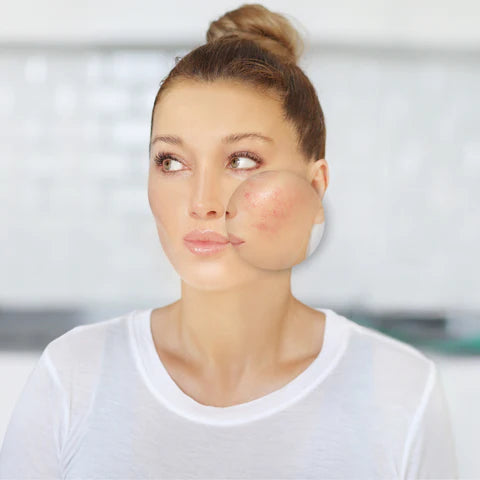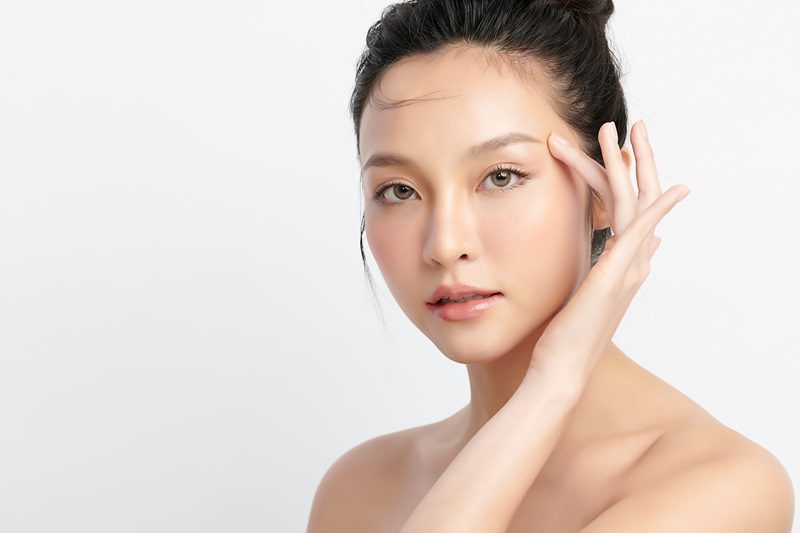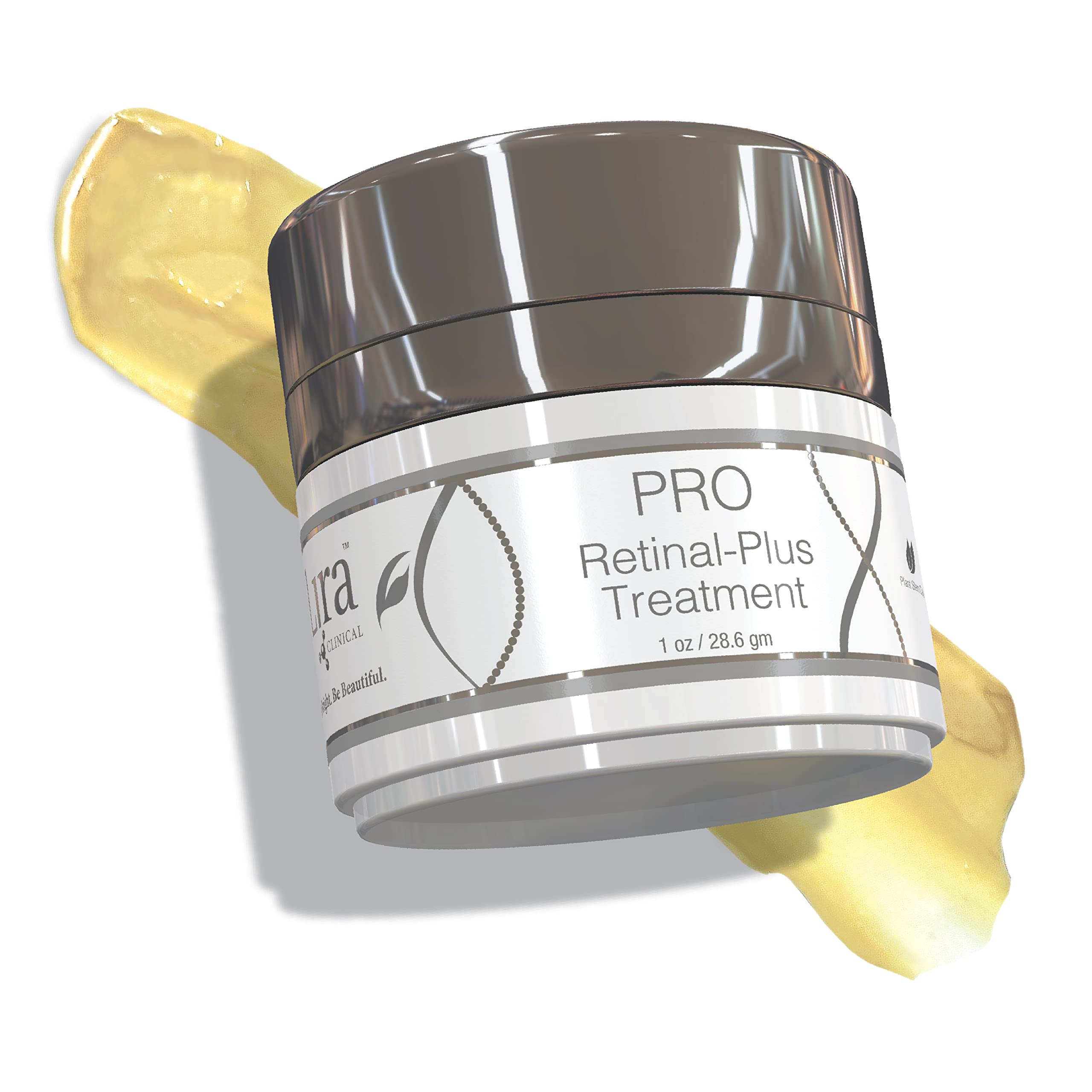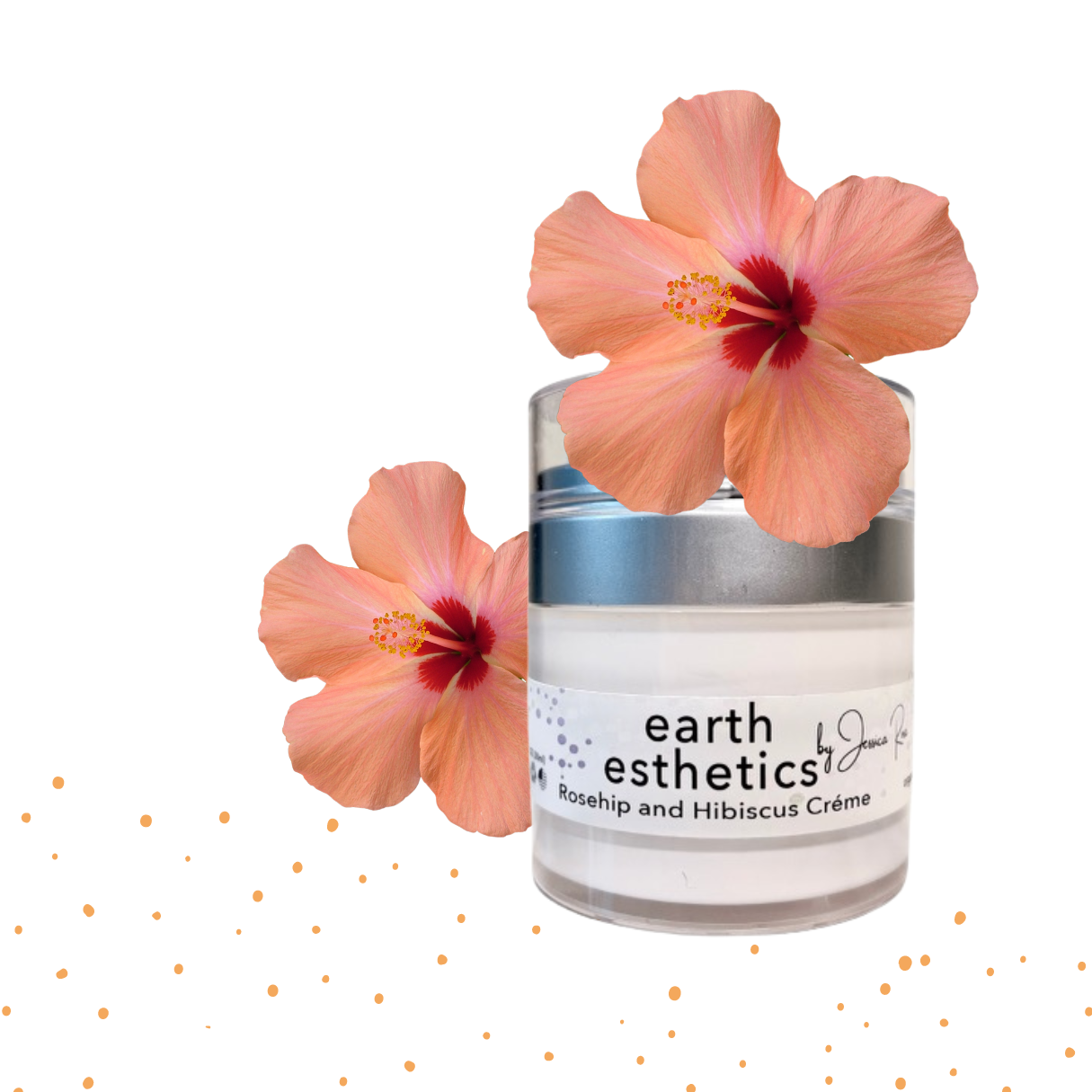You don't have to be clinically diagnosed with "Rosacea" to battle the red skin flare-up. It can look different for everyone.
...is a common skin condition that causes blushing or flushing and visible blood vessels in your face. It may also produce small, pus-filled bumps. These signs and symptoms may flare up for weeks to months and then go away for a while. Rosacea can be mistaken for acne, other skin problems, or natural ruddiness.
Rosacea can affect anyone. But it's most common in middle-aged Caucasian women. There's no cure for rosacea, but treatment can control and reduce the signs and symptoms.
Signs you may have more than just redness but, actually rosacea may be any of the following:
- Facial blushing or flushing. Rosacea can cause persistent blushing or flushing in the central part of your face. This sign of the condition may be difficult to see on brown and Black skin.
- Visible veins. Small blood vessels of your nose and cheeks break and become visible (spider veins).
- Swollen bumps. Many people with rosacea also develop pimples on their face that resemble acne. These bumps sometimes contain pus.
- Burning sensation. The skin of the affected area may feel hot and tender.
- Eye problems. Many people with rosacea also experience dry, irritated, swollen eyes and eyelids. This is known as ocular rosacea. In some people, the eye symptoms precede the skin symptoms.
- Enlarged nose. Over time, rosacea can thicken the skin on the nose, causing the nose to appear bulbous (rhinophyma). This occurs more often in men than in women.

When to see a doctor:
If you experience persistent symptoms on/in your face or eyes, see your doctor or a skin specialist (dermatologist) for a diagnosis and proper treatment.
DIY SKINCARE FOR ROSACEA
Some days your Rosacea/redness can be worse than others and flare-ups can be caused by a variety of factors.
The cause of rosacea is unknown, but it could be due to an overactive immune system, heredity, environmental factors, or a combination of these. Rosacea is not caused by poor hygiene and it's not contagious.
There's no cure for rosacea, but treatment can control and reduce the signs and symptoms. Keep reading for all our tips and tricks to keep Rosacea subdued and silent.
There's a lot you can do on your own to keep Rosacea at bay:
- For starters, try to figure out the things that trigger an outbreak, and then avoid them.
- To help you do this, keep a journal that tracks your activities and your flare-ups.
- Hot drinks and spicy foods ☕️ 🌶
- Red wine and other alcoholic beverages 🍷
- Temperature extremes 🔥
- Sun or wind 🌞 🌬
- Emotions 😢 😡
- Exercise 🏋🏼♀️
- Drugs that dilate blood vessels, including some blood pressure medications 💊
- Some cosmetic, skin, or hair care products 🧴
- But you may be more likely to develop it if you: * Are female 👩🏻🦱 👩🏼🦱 👩🏽🦱 👩🏾🦱 👩🏻🦰
- Have skin that burns easily in the sun 🥵
- Are over age 30 🙋🏼♀️
- Smoke 🚬
- Have a family history of rosacea 👵🏼
EVERYTHING YOU NEED TO KNOW TO CREATE THE RIGHT SKINCARE ROUTINE TO REDUCE REDNESS
The first step to creating the right skincare routine to help calm redness and/or rosacea is to know which ingredients can aggravate your symptoms.
As a general rule, avoid ingredients that are known to cause dryness and irritation, as this can lead to the inflammation and redness that you’re trying to calm.
Some common drying ingredients that you might not be aware are actually drying are:
- Fragrances
- Peppermint oil
- Eucalyptus oil
- Certain alcohols
- Witch hazel
People with rosacea should also avoid using foaming cleansers and astringents, as these products can also cause dryness, which can trigger a flare-up.
So what kind of skincare ingredients should you look out for?
Skincare ingredients to choose from (once you’ve gotten rid of the irritating/drying culprits) should include skin-soothing and calming ingredients, and yes, why of course! Some of these might be obvious, but I bet a few of these will be new and inspiring.
So here goes - some of the best ingredients for people with rosacea are:
- Green tea extract
- Rosehip seed extract/ oil
- Argan oil
- Niacinamide
- Linoleic oils
- Chamomile
- Aloe
While looking for these ingredients, it is important to focus on using a moisturizer to help repair the skin’s protective barrier - the outermost layer of skin.
Your outermost layer is responsible for keeping water content sealed inside the skin, while simultaneously preventing harmful pollutants and irritants from getting inside.
To help repair and protect the skin barrier and soothe skin inflammation, use a moisturizer like Earth Esthetics’ Rosehip and Hibiscus Crème.
It's packed with many of the good list ingredients and has been called a "miracle" creme for redness/rosacea.
It is very effective at replenishing moisture and nutrients for smooth, comfortable skin.
TIPS AND TRICKS TO KEEP ROSACEA AT BAY
Try to follow these tips every day to help fade the redness on your skin:
- Put on sunscreen. Use one that's a broad spectrum (blocks UVA and UVB rays) and SPF 30 or higher whenever you go outside. Also, wear a wide-brimmed hat that covers your face.
- Use only gentle skin care products. Avoid cleansers and creams that have alcohol, fragrance, witch hazel, and other harsh ingredients. After you wash your face, gently blot your skin dry with a soft cloth.
- Use a moisturizer. It's especially helpful in cold weather. Low temps and wind can dry up your skin. Massage your face. Gently rub your skin in a circular motion. Start in the middle of your face and work your way outward toward your ears.
- Cover up. Put a green-tinted cover-up on your face to hide redness and broken blood vessels.
- Go indoors. Get out of the heat and sun and cool off in an air-conditioned room.
- Care for your eyes. If rosacea has made them red and irritated, use a watered-down baby shampoo or eyelid cleaner to gently clean your eyelids every day. Also, put a warm compress on your eyes a few times a day.
WE LOVE BEFORE AND AFTERS
My client, Kathy, has been a rockstar client who has been getting tremendous results treating her rosacea.
As you may know, rosacea is temperamental and hard to tame.
Although there may not be a cure for it, there are effective ways to manage the symptoms.
A simple 4 to 6-week brightening facial routine with me in the clinic was where she started.
And, if you know me, you know how I stress the importance of a consistent skincare routine at home for achieving results. Kathy nailed it, and with these before, and after pictures, you can tell!
CHECK OUT MY FAVORITE PRODUCTS TO TREAT RED TO ROSACEA








